Blog Post Move(블로그 포스트 https://generative-ai.tistory.com/ 이동!)
이제 블로그 포스트를 이제 https://generative-ai.tistory.com/ 여기로 이동합니다!
그 동안 블로그를 여기 작성하면서 많은 공수가 들었지만 md 파일로 작성하는 편안함도 있지만 그래도 Tistory를 활용해 작성해서 조회수 수익을 얻어 보고 싶습니다! 도움을 주신다면 더 좋은 컨텐츠를 만들어 보답하겠습니다!
이제 블로그 포스트를 이제 https://generative-ai.tistory.com/ 여기로 이동합니다!
그 동안 블로그를 여기 작성하면서 많은 공수가 들었지만 md 파일로 작성하는 편안함도 있지만 그래도 Tistory를 활용해 작성해서 조회수 수익을 얻어 보고 싶습니다! 도움을 주신다면 더 좋은 컨텐츠를 만들어 보답하겠습니다!
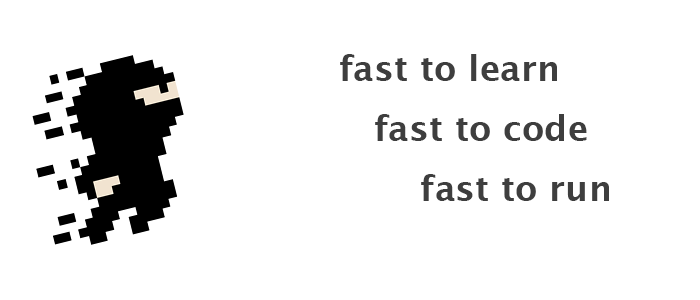
At its core, Django is a robust, high-level Python web framework that allows developers to build complex, database-driven websites quickly and easily. However, as with any tool, there are limitations to what Django can do out of the box. That's where Django Ninja comes in.
Django Ninja is a web framework for building APIs using Django and Python 3.6+ type hints. It is designed to be easy to install and use, and provides very high performance thanks to Pydantic and async support. Django Ninja provides type hints and automatic documentation to focus only on business logic.
Django Ninja was developed to address some of the limitations of the Django framework. For example, Django is known for its heavy reliance on the Model-View-Controller (MVC) architecture, which can be cumbersome and difficult to work with for certain types of applications. Additionally, Django is not designed specifically for building APIs, which can make it difficult to customize and optimize for certain use cases.
Django Ninja was designed with these limitations in mind. It is a high-performance framework that is specifically designed for building APIs. It provides a simple and intuitive syntax that allows developers to build powerful APIs quickly and easily. Additionally, Django Ninja is built on top of the popular Django web framework, which means that it inherits many of the benefits and features of Django, such as its robust security features and powerful ORM.

One of the main advantages of Django Ninja is its simplicity. The framework provides a simple and intuitive syntax that makes it easy to build powerful APIs quickly and efficiently. Additionally, Django Ninja is designed specifically for building APIs, which means that it is highly customizable and optimized for this use case.
Another advantage of Django Ninja is its performance. The framework is designed to be fast and lightweight, which means that it can handle high levels of traffic and is well-suited for building large-scale APIs.
However, there are also some disadvantages to using Django Ninja compared to Django. For example, Django Ninja is not as well-established as Django, which means that there is less documentation and fewer resources available for developers. Additionally, Django Ninja is not as flexible as Django, which means that it may not be the best choice for building complex, database-driven web applications.
One of my favorite advantages of Django Ninja is that it automatically creates API documentation for Backend developers, which is the most annoying when developing.
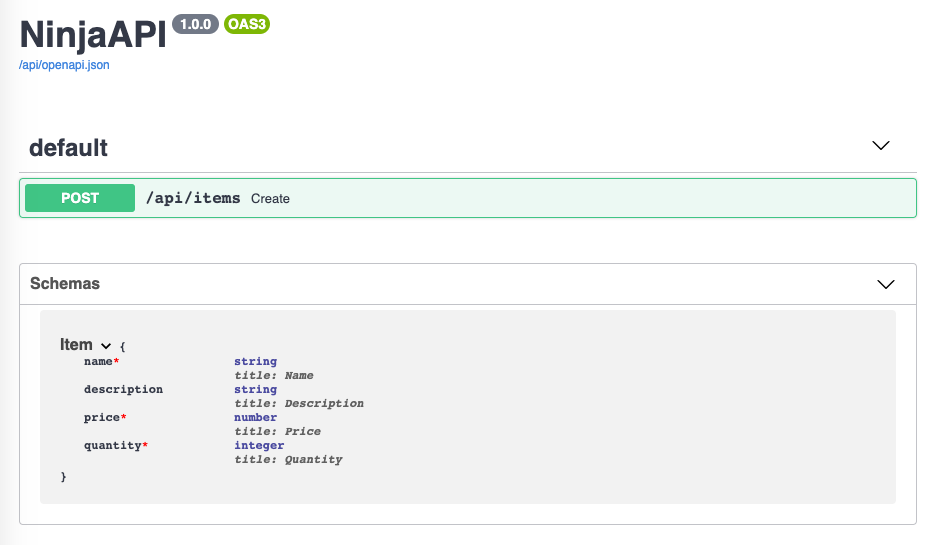
Django Ninja's auto schema generating feature is a powerful tool that enables developers to automatically generate OpenAPI schemas for their APIs. This means that developers no longer need to manually write and maintain complex JSON or YAML files to describe their APIs. Instead, they can simply define their API endpoints using Django Ninja's clean and concise syntax, and the tool will automatically generate the schema for them.
The auto schema generating feature works by leveraging the power of Python's type annotations. When a developer defines an endpoint using Django Ninja, they can include type annotations for each parameter and response. For example, if a developer defines a POST endpoint that accepts a JSON payload with a name and age field, they can annotate the endpoint like this.
from ninja import Schema, Router
class Person(Schema):
name: str
age: int
router = Router()
@router.post("/person")
def create_person(request, person: Person):
return {"message": f"Hello {person.name}, you are {person.age} years old!"}
When the developer runs the Django Ninja app, the auto schema generating feature will inspect the type annotations and generate an OpenAPI schema for the endpoint. The schema will include all the necessary information about the endpoint, including the request and response types, status codes, and any additional metadata.
There are several reasons why Django Ninja's auto schema generating feature is a game-changer for API development. First and foremost, it saves developers time and effort by automating the process of generating schemas. This means that developers can focus on writing clean and concise code, rather than spending hours manually writing and maintaining complex JSON or YAML files.
Secondly, the auto schema generating feature improves the overall quality of the API documentation. The generated OpenAPI schema is always up-to-date and reflects the current state of the API. This means that developers and consumers of the API can rely on the documentation to be accurate and complete.
Finally, the auto schema generating feature makes it easier to collaborate on API development projects. Since the schema is automatically generated from the code, developers can easily share and review the API documentation without having to worry about keeping it in sync with the codebase.
To use Django Ninja, you first need to install it using pip. You can do this by running the following command in your terminal
pip install django-ninja
Once Django Ninja is installed, i can start building our API. Let's create a new Django project and app using the following commands:
django-admin startproject myproject
cd myproject
python manage.py startapp myapp
Now that i have our project and app set up, i can start building our API. Let's create a new file called views.py in our app directory and define our first endpoint.
from ninja import Router
router = Router()
@router.get("/hello")
def hello(request):
return {"message": "Hello World!"}
In this code, i'm using the Router class from Django Ninja to define our endpoint. I'm also using a decorator to specify that this endpoint should handle GET requests to the /hello path. When this endpoint is called, it will return a JSON response with a message property set to "Hello World!".
Next, i need to our project's URL configuration. In the urls.py file in our app directory, i'll add the following code:
from django.urls import path
from myapp.views import router
urlpatterns = [
path("api/", router.urls),
]
In this code, i'm importing our Router instance from our views.py file and adding it to our URL configuration. I'm specifying that our API should be available at the /api/ path, which means that our /hello endpoint will be available at /api/hello.
With our endpoint and URL configuration in place, i can now start our development server and test our API.
python manage.py runserver
If i navigate to http://localhost:8000/api/hello in our web browser or API client, i should see our "Hello World!" message. Very easy to use as above.
Django Ninja is a fast, easy-to-use web framework for building APIs with Django and Python. Its automatic schema generation, asynchronous support, and clean syntax make it an ideal choice for backend development. By following the code samples provided in this article, you can quickly get up and running with Django Ninja and start building powerful APIs.
I highly recommend using Django Ninja for your next backend development project, as it offers numerous advantages over other frameworks in terms of speed, performance, and ease of use.

As the field of artificial intelligence continues to advance, more and more developers are turning to deep learning frameworks to build advanced machine learning models. However, building these models can be challenging, time-consuming, and require a significant amount of expertise.
This is where PyTorch Lightning comes in. PyTorch Lightning is a lightweight PyTorch wrapper that simplifies the process of building, training, and deploying deep learning models. In this article, i will explore PyTorch Lightning in detail, including what it is, why it was created, and how it can help you build better deep learning models faster.
PyTorch Lightning is an open-source PyTorch framework that provides a lightweight wrapper for PyTorch. The goal of PyTorch Lightning is to make deep learning easier to use, more scalable, and more reproducible. With PyTorch Lightning, developers can build advanced deep learning models quickly and easily, without having to worry about the low-level details of building and training these models.
PyTorch Lightning was created by the team at the PyTorch Lightning Research Group, which is a community-driven research group focused on making deep learning easier and faster. The framework has gained widespread adoption in the deep learning community due to its simplicity, ease of use, and ability to improve model scalability.
PyTorch Lightning was created to address some of the challenges and limitations of building and training deep learning models using PyTorch. These challenges include:
PyTorch Lightning provides the LightningModule class, which is a standard interface for organizing PyTorch code. It separates the model architecture from the training loop and allows users to define the forward pass, loss function, and optimization method in a single module. This makes it easy to reuse code across different models and experiments.
PyTorch Lightning provides the Trainer class, which is a high-level interface for training models. It automates the training loop, handling details such as batching, gradient accumulation, and checkpointing. It also supports distributed training across multiple GPUs and nodes, making it easy to scale up training to large datasets.
PyTorch Lightning provides a callback system that allows users to modify the training process at runtime. Callbacks can be used to implement custom logging, learning rate scheduling, early stopping, and other functionality.
PyTorch Lightning provides the LightningDataModule class, which is a standardized way to load and preprocess data for training. It separates the data loading and preprocessing code from the model code, making it easy to reuse data across different models and experiments.
PyTorch Lightning uses the PyTorch backend, which provides fast and efficient training on GPUs. It also supports mixed-precision training, which allows users to train models with lower precision floating-point numbers to reduce memory usage and speed up training.
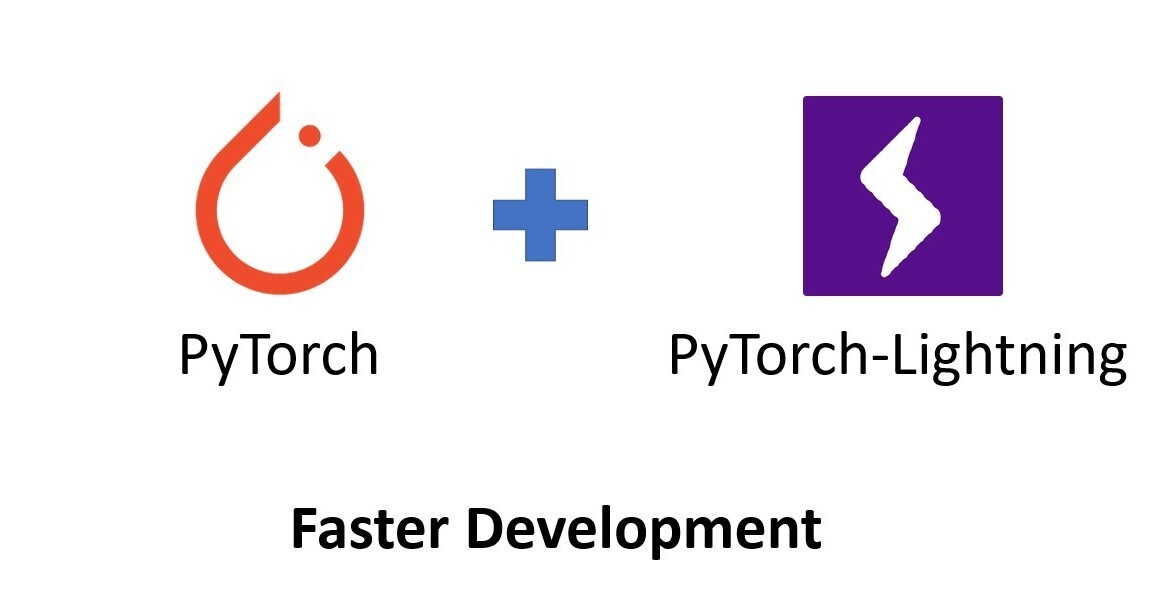
In PyTorch, users must write their own training loop and organize the code for the model, data loading, and training in a custom way. In PyTorch Lightning, users define the model and data loading code in standardized modules, and the training loop is handled by the Trainer class.
In PyTorch, users must write custom code to enable distributed training across multiple GPUs or nodes. In PyTorch Lightning, distributed training is supported out of the box using the Trainer class.
In PyTorch, users must write custom code to save and load checkpoints during training. In PyTorch Lightning, checkpointing is handled automatically by the Trainer class.
In PyTorch, users must write custom code to enable mixed-precision training. In PyTorch Lightning, mixed-precision training is supported out of the box using the Trainer class.
Before i begin, make sure that you have PyTorch and PyTorch Lightning installed. You can install them using pip, as shown below:
pip install torch
pip install pytorch-lightning
Once you have installed these packages, you can create a new PyTorch Lightning project by running the following command:
mkdir my_project
cd my_project
touch main.py
This will create a new directory called "my_project" and a new Python file called "main.py". This file will be the entry point for our PyTorch Lightning project.
To define a PyTorch Lightning model, i need to create a new class that inherits from the LightningModule class. In this example, i will define a simple linear regression model that predicts the output based on the input.
import torch.nn as nn
class LinearRegressionModel(pl.LightningModule):
def __init__(self):
super(LinearRegressionModel, self).__init__()
self.linear = nn.Linear(1, 1)
def forward(self, x):
out = self.linear(x)
return out
In the constructor of the class, i define the layers of the model. In this case, i define a single linear layer that takes one input and produces one output. In the forward method, i define how the input is processed by the layers of the model.
Next, i need to implement the training loop. PyTorch Lightning provides a convenient interface for training the model, called the Trainer class. I can define the training loop by overriding the training_step method of the LightningModule class. In this example, i will train the model on a dataset of random data points.
import torch.optim as optim
class LinearRegressionModel(pl.LightningModule):
def __init__(self):
super(LinearRegressionModel, self).__init__()
self.linear = nn.Linear(1, 1)
def forward(self, x):
out = self.linear(x)
return out
def training_step(self, batch, batch_idx):
x, y = batch
y_pred = self(x)
loss = nn.functional.mse_loss(y_pred, y)
return {'loss': loss}
def configure_optimizers(self):
optimizer = optim.SGD(self.parameters(), lr=0.01)
return optimizer
In the training_step method, i define the forward pass of the model, compute the loss, and return a dictionary containing the loss. In the configure_optimizers method, i define the optimizer used to optimize the model parameters. In this example, i use stochastic gradient descent (SGD) with a learning rate of 0.01.
To evaluate a PyTorch Lightning model, i need to define an evaluation step function that takes in a batch of data and returns the model's predictions. I can also define a separate function to calculate the metrics i am interested in.
Here's an example of an evaluation step function for a classification problem:
def validation_step(self, batch, batch_idx):
x, y = batch
y_pred = self.forward(x)
loss = F.cross_entropy(y_pred, y)
preds = torch.argmax(y_pred, dim=1)
acc = accuracy(preds, y)
self.log_dict({'val_loss': loss, 'val_acc': acc}, prog_bar=True)
return loss
In this example, i pass a batch of data and the batch index to the function. I then calculate the model's predictions using the forward function and calculate the cross-entropy loss between the predictions and the ground truth labels. I also calculate the accuracy of the model's predictions using a separate function called accuracy. Finally, i log the validation loss and accuracy using the log_dict function.
To calculate the metrics i am interested in, i can define a separate function that takes in the model's predictions and the ground truth labels:
def calculate_metrics(preds, y):
acc = accuracy(preds, y)
precision = precision_score(y.cpu(), preds.cpu(), average='macro')
recall = recall_score(y.cpu(), preds.cpu(), average='macro')
f1 = f1_score(y.cpu(), preds.cpu(), average='macro')
return acc, precision, recall, f1
In this example, i calculate the accuracy, precision, recall, and F1 score of the model's predictions using functions from the sklearn.metrics module.
Once i have defined our evaluation step function and metrics function, i can run evaluation on a PyTorch Lightning model using the trainer.test method:
trainer.test(model, datamodule=datamodule)
In this example, i pass in the PyTorch Lightning model and the data module used for testing. The trainer.test method will run the evaluation step function on the test data and calculate the metrics i defined earlier.
PyTorch Lightning is a powerful and efficient framework for training and deploying deep learning models. Its modular design and clean abstractions make it easy to write concise and maintainable code. With its automatic optimization and streamlined API, PyTorch Lightning simplifies the process of building and training complex models, freeing up valuable time and resources for researchers and practitioners.
I highly recommend PyTorch Lightning to anyone who is interested in developing machine learning models. Whether you're a seasoned expert or just getting started, PyTorch Lightning offers an intuitive and flexible platform for designing and implementing state-of-the-art models with ease. With its extensive documentation, vibrant community, and active development, PyTorch Lightning is sure to become an indispensable tool for machine learning practitioners and researchers alike. So give it a try and see for yourself why PyTorch Lightning is quickly becoming the go-to framework for deep learning!

At a time when mobile app development has become the norm, it's not surprising to see an increasing number of frameworks that make the process more efficient. One such framework is Flet, a Python-based framework that enables developers to build native iOS and Android apps using a single codebase. In this article, i will delve into the world of Flet and explore its origins, characteristics, and usage. I will also compare Flet with another popular framework, Flutter, to understand how they differ and where Flet shines.
Flet was first introduced in 2019 by a group of Japanese developers looking to create a Python framework that took inspiration from Flutter's unique approach to building user interfaces. The framework quickly gained popularity within the Python community, and today, it boasts an active community of contributors and users.
The primary goal of Flet is to simplify the development process by enabling developers to write code once and deploy it on both iOS and Android platforms. Flet is built on top of popular Python frameworks such as Flask and Kivy, making it easy to integrate with other Python libraries.
At its core, Flet is designed to be simple, intuitive, and flexible. Here are some of the key characteristics of the framework:
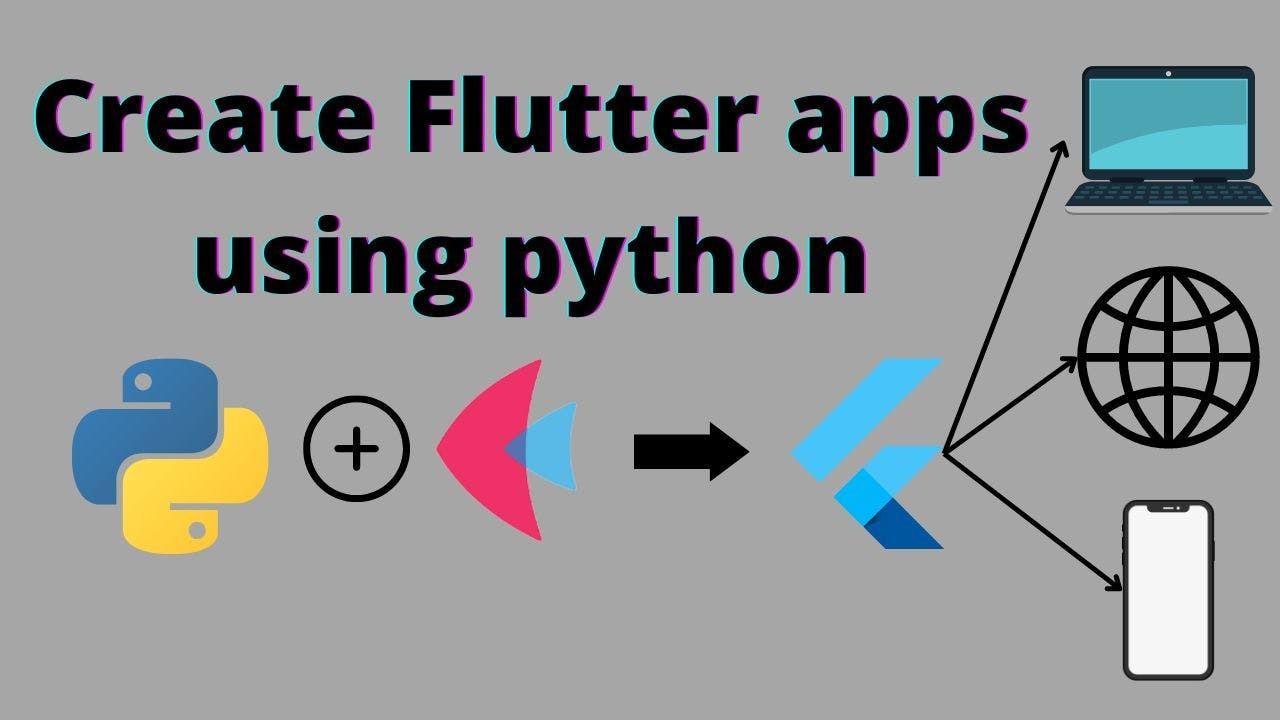
The primary difference between Flet and Flutter is the programming language used. Flutter uses the Dart programming language, while Flet uses Python. For Python developers, Flet provides a more accessible option.
Flet's syntax is more intuitive and straightforward compared to Flutter. Python developers will find Flet's syntax more familiar, making it easier to learn and use.
Both Flet and Flutter are highly customizable, but Flet provides more flexibility due to Python's dynamic nature. Python developers can leverage their existing skills to create more complex and customized apps.
Now that I've explored some of the characteristics of Flet, let's take a look at example of how to use the framework. I'll compare Flet to Flutter to highlight the similarities and differences between the two frameworks.
from flet import Text, TextField, Button
class LoginScreen:
def build(self):
return Column(
children=[
Text('Login'),
TextField('Username'),
TextField('Password'),
Button('Login')
]
)
And here's the equivalent code in Flutter
import 'package:flutter/material.dart';
class LoginScreen extends StatelessWidget {
@override
Widget build(BuildContext context) {
return Column(
children: [
Text('Login'),
TextField(
decoration: InputDecoration(hintText: 'Username'),
),
TextField(
decoration: InputDecoration(hintText: 'Password'),
),
ElevatedButton(
onPressed: () {},
child: Text('Login'),
),
],
);
}
}
As you can see, the code in Flet is very similar to the code in Flutter. Both frameworks use widgets to build the user interface, and the code is easy to read and understand.
Flutter can also be used to build a app, but developers may need to spend more time learning the framework and the Dart language before they can start building.
if you are a Python developer and want to start building mobile applications, flet is an excellent choice. It provides a lot of useful features and widgets, as well as comprehensive documentation, making it easy for beginners to get started quickly. Additionally, flet's similarity to flutter makes it easy to switch between the two libraries, allowing developers to choose the one that best suits their needs.
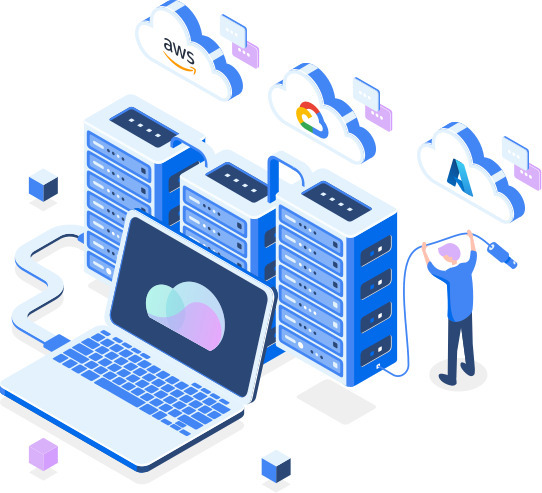
At the core of infrastructure as code (IaC) lies the concept of automating infrastructure management through code. Terraform, an open-source IaC tool, has gained immense popularity over the years due to its versatile capabilities, large provider ecosystem, and robust community support. But with the growing need for more efficient and flexible IaC tools, a new player has emerged in the field: Multy.
In this article, I will introduce Multy, discuss its features and advantages, and provide a comprehensive comparison with Terraform to help you decide which tool is best suited for your infrastructure management needs.
Multy is an open-source IaC tool that was created to provide a more flexible and efficient way of managing cloud infrastructure. It was designed to address some of the limitations of other popular IaC tools, such as Terraform. One of the main features of Multy is its ability to handle multiple cloud providers, such as AWS, Azure, and GCP, simultaneously. This means that users can manage cloud infrastructure across multiple providers using a single tool, which is a significant advantage over other tools that are limited to a single cloud provider.
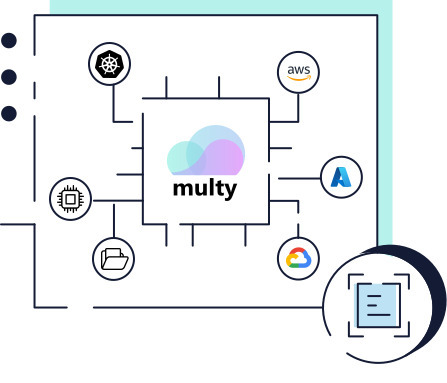
Multy has several unique features that make it a powerful IaC tool. Here are some of its key features:
Multy and Terraform are both powerful IaC tools, and each has its advantages and disadvantages. Here are some of the pros and cons of Multy compared to Terraform:
Using Multy is straightforward. Here's a step-by-step guide to get started with Multy:
multy initmulty applyMulty is a promising alternative to Terraform that offers several unique features, including multi-cloud provider support, native Kubernetes support, and secure remote state management. While it has some limitations, it's worth exploring if you are looking for a cloud-agnostic IaC tool that can help you manage your infrastructure across multiple cloud providers.
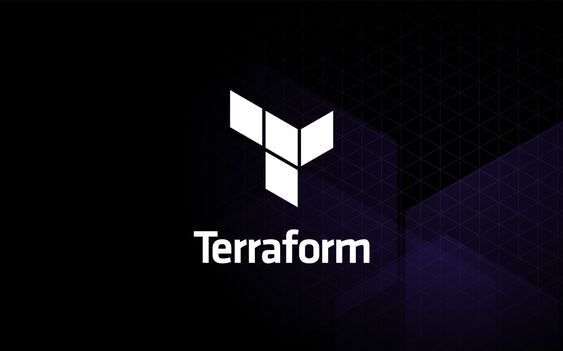
As the world moves towards the cloud, managing infrastructure has become increasingly complex. Whether you're working with AWS, GCP, or Azure, the sheer number of services available can be overwhelming. Infrastructure management is no longer just about keeping the lights on; it's about keeping your applications running smoothly while keeping costs under control. Enter Terraform - an open-source infrastructure-as-code tool that simplifies infrastructure management.
Terraform is a tool that allows you to define your infrastructure as code. This means that instead of configuring your infrastructure manually, you can write code that describes the desired state of your infrastructure. Terraform then takes care of creating, updating, or deleting resources to make sure that your infrastructure matches the code you've written.
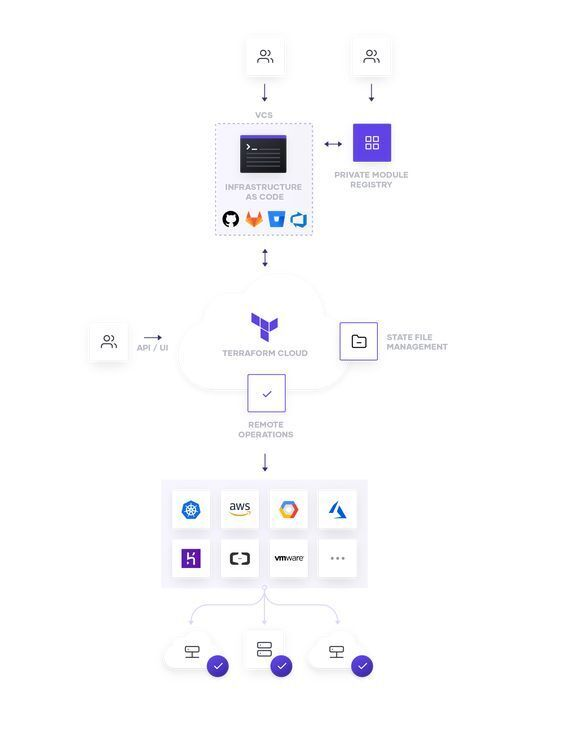
Terraform offers many benefits over manual infrastructure management. Firstly, it simplifies the process of defining your infrastructure. Instead of manually creating and configuring resources, you can use code to define your infrastructure. This makes it easier to create repeatable, predictable infrastructure that can be easily tested and modified.
Secondly, Terraform allows you to manage your infrastructure in a modular way. Instead of having to manage a monolithic infrastructure, you can break it down into smaller, more manageable components. This makes it easier to understand and modify your infrastructure.
Finally, Terraform makes it easier to manage infrastructure at scale. With Terraform, you can define your infrastructure in a way that makes it easy to replicate across multiple environments. This makes it easier to manage infrastructure across different regions, data centers, or cloud providers.
Terraform can be installed on Windows, Mac, and Linux. The installation process is straightforward and can be completed in a few simple steps. To install Terraform, follow the instructions provided in the official Terraform documentation for your specific operating system.
For Linux users, the easiest way to install Terraform is by using a package manager such as apt or yum. Here is an example of how to install Terraform on Ubuntu using apt.
sudo apt-get update
sudo apt-get install terraform
On MacOS, you can install Terraform using the popular package manager Homebrew
brew install terraform
For Windows users, Terraform can be installed by downloading the appropriate executable file from the official Terraform website. Once downloaded, unzip the file and add the binary to your system's path.
Once Terraform is installed, you'll need to configure it to work with your cloud provider. This involves setting up credentials and configuring the provider settings. Again, the official Terraform documentation provides detailed instructions for each cloud provider.
To connect to AWS, you need to have an AWS account and create an access key and secret key. Once you have those, add the following code to your Terraform configuration file:
provider "aws" {
region = "us-west-2"
access_key = "YOUR_ACCESS_KEY"
secret_key = "YOUR_SECRET_KEY"
}
Make sure to replace YOUR_ACCESS_KEY and YOUR_SECRET_KEY with your actual access key and secret key.
To connect to GCP, you need to have a GCP account and create a service account key. Once you have that, add the following code to your Terraform configuration file:
provider "google" {
credentials = file("path/to/your/credentials.json")
project = "your-project-id"
region = "us-west1"
}
Make sure to replace path/to/your/credentials.json and your-project-id with the path to your credentials file and your actual GCP project ID.
To connect to Azure, you need to have an Azure account and create a service principal. Once you have that, add the following code to your Terraform configuration file:
provider "azurerm" {
subscription_id = "YOUR_SUBSCRIPTION_ID"
client_id = "YOUR_CLIENT_ID"
client_secret = "YOUR_CLIENT_SECRET"
tenant_id = "YOUR_TENANT_ID"
}
Make sure to replace YOUR_SUBSCRIPTION_ID, YOUR_CLIENT_ID, YOUR_CLIENT_SECRET, and YOUR_TENANT_ID with your actual Azure subscription ID, client ID, client secret, and tenant ID.
Now that you have Terraform installed and connected to your cloud provider, you can start managing infrastructure as code. Here are some examples of how to add, update, change, or remove real infrastructure using Terraform.
Let's look at how you can use Terraform to manage your infrastructure. In this example, I'll use AWS as our cloud provider.
provider "aws" {
region = "us-west-2"
}
resource "aws_instance" "example" {
ami = "ami-0c55b159cbfafe1f0"
instance_type = "t2.micro"
}
resource "aws_s3_bucket" "example" {
bucket = "example-bucket"
}
Initialize Terraform
Next, I need to initialize Terraform by running the terraform init command. This will download the necessary providers and modules.
Plan the changes
I can now use the terraform plan command to preview the changes that Terraform will make to our infrastructure.
Apply the changes
Finally, I can apply the changes by running the terraform apply command. This will apply the Terraform configuration and creates the resources defined in the configuration.
Update the Configuration
If you want to change the configuration, you can update the Terraform configuration file and run terraform apply again. Terraform will automatically detect the changes and update the resources accordingly.
Remove Resources
If you want to remove the resources defined in the configuration, you can run terraform destroy. This will remove all resources defined in the Terraform configuration.
Infrastructure as code has become an essential part of modern software development, and Terraform is one of the most popular tools for managing infrastructure as code.
With Terraform, you can manage infrastructure across multiple cloud providers, define infrastructure in a declarative language, and version control your infrastructure. If you're not already using Terraform, I highly recommend that you give it a try.
In the next blog post, I will introduce Multy, a powerful tool for managing multiple Terraform workspaces. Stay tuned!
![]()
Memphis is an open-source message queuing and streaming platform that has gained a lot of traction in recent years due to its powerful features and ease of use. It was created to solve the problems of scaling, reliability, and performance in large-scale distributed systems. In this article, i will take a deep dive into Memphis and compare it with RabbitMQ and Kafka, which are similar technology stacks. I will also show you an example of how to use Memphis in detail and discuss the limitations that still exist.
Memphis is a highly performant messaging system that is designed to be easy to use and highly scalable. It is built on top of the Rust programming language and leverages the power of modern hardware to deliver exceptional performance. Memphis is designed to be highly fault-tolerant and can handle the loss of nodes in a cluster without any loss of data or service interruption. It uses a peer-to-peer architecture that allows for seamless horizontal scaling.
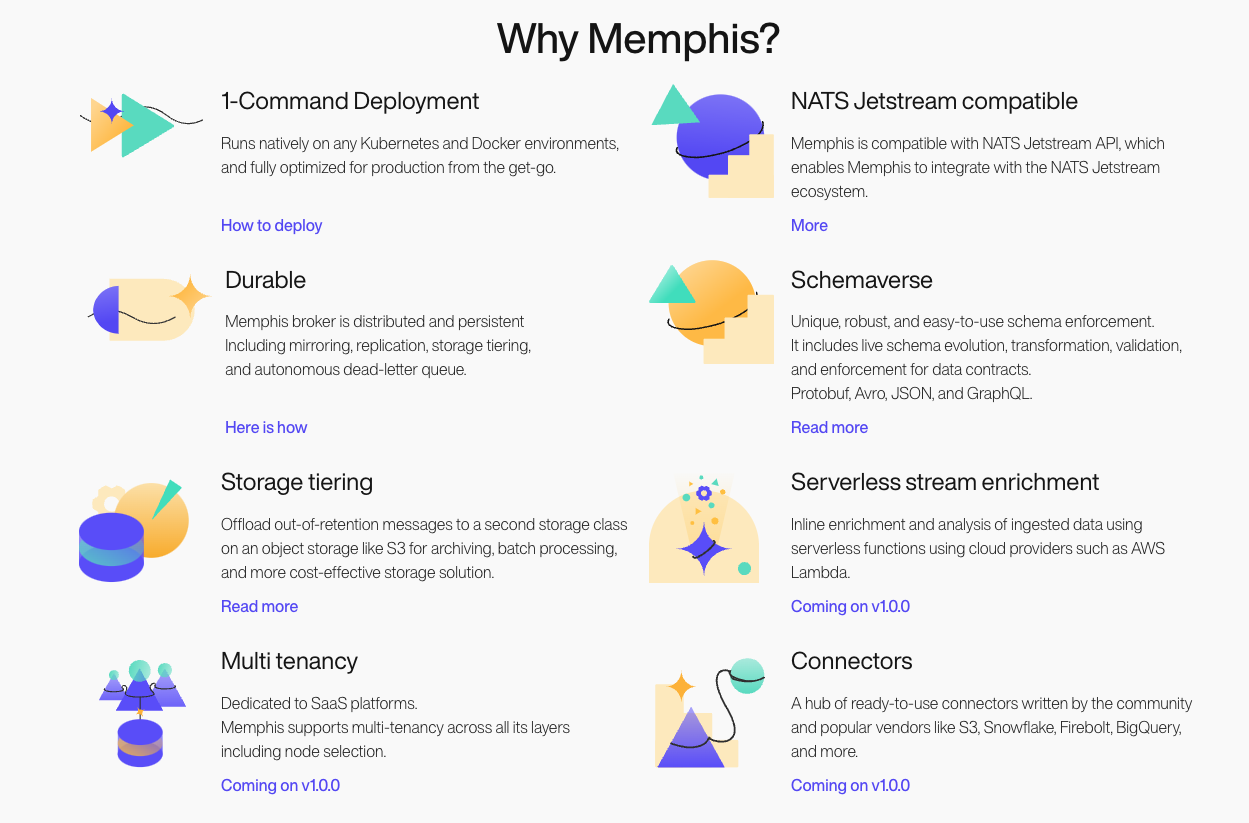 One of the biggest strengths of Memphis is its ease of use. It comes with a simple and intuitive API that makes it easy to get started with. It also has an excellent documentation that makes it easy to learn and troubleshoot. Memphis is highly reliable and can deliver messages with low latency, making it ideal for use cases that require real-time data processing.
One of the biggest strengths of Memphis is its ease of use. It comes with a simple and intuitive API that makes it easy to get started with. It also has an excellent documentation that makes it easy to learn and troubleshoot. Memphis is highly reliable and can deliver messages with low latency, making it ideal for use cases that require real-time data processing.
When compared to RabbitMQ and Kafka, Memphis is faster and can deliver messages with lower latency. It is also easier to use and has a lower learning curve than both RabbitMQ and Kafka. Memphis also supports a wide range of protocols, including HTTP, MQTT, and AMQP, which makes it highly versatile.
RabbitMQ is a popular message broker that is widely used in enterprise environments. It is built on top of the Erlang programming language and is designed to be highly reliable and scalable. RabbitMQ is known for its advanced features, such as message routing, clustering, and federation.
When compared to Memphis, RabbitMQ is more complex and has a steeper learning curve. It is also slower than Memphis and has higher latency when delivering messages. RabbitMQ has more advanced features than Memphis, but these features come at the cost of increased complexity.
Kafka is a distributed streaming platform that is widely used for building real-time data pipelines and streaming applications. It is built on top of the Java programming language and is designed to be highly scalable and fault-tolerant. Kafka is known for its high throughput and low latency, making it ideal for use cases that require real-time data processing.
When compared to Memphis, Kafka is more complex and has a steeper learning curve. It is also slower than Memphis and has higher latency when delivering messages. Kafka has more advanced features than Memphis, such as the ability to store and process streams of data over extended periods of time, but these features come at the cost of increased complexity.
How to use Memphis, let's look at an example with code. Suppose i have two applications that need to communicate asynchronously. The first application produces messages, while the second application consumes messages. To use Memphis for this, i first need to set up a Memphis broker and create a queue for the messages. Here's how to do it.
const { memphis } = require('memphis');
const broker = new memphis.Broker();
const queue = broker.createQueue('example_queue');
// Producer application code
const producer = broker.createProducer('example_queue');
producer.send({ message: 'Hello, World!' });
// Consumer application code
const consumer = broker.createConsumer('example_queue');
consumer.on('message', (msg) => {
console.log(`Received message: ${msg.content.toString()}`);
});
This code creates a Memphis broker, creates a queue called 'example_queue', and sets up a producer and consumer for the queue. The producer sends a message to the queue, while the consumer listens for messages and prints them to the console. This is just a simple example, but it demonstrates how easy it is to use Memphis for asynchronous communication between applications.
Another example of how to use Memphis to send message from a producer to a consumer.
use memphis::client::MemphisClient;
let client = MemphisClient::new("localhost:5555").unwrap();
let message = "Hello, world!";
let topic = "my-topic";
client.send(topic, message).unwrap();
This example creates a Memphis client and sends a message to the "my-topic" topic.
While Memphis is an excellent messaging system, there are still some limitations that exist.
One of the main limitations is its lack of support for some messaging patterns such as publish-subscribe and topic-based messaging. This can make it difficult to implement certain types of applications that require these patterns.
Another limitation is its lack of support for dynamic routing, which can make it challenging to route messages to specific destinations dynamically. Memphis also has a smaller community.
Memphis is a reliable and high-performance messaging system that is easy to use and has several strengths when compared to other similar messaging systems such as RabbitMQ and Kafka. Although it does have some limitations, they are constantly working to improve Memphis and make it more versatile and robust.
It is still a beta version and has many limitations, but I think it has many strengths and features a new technology stack that is easy to use. If you try it once, I recommend you to try it because you will be able to apply it quickly when the official version is relesed someday.

If you're familiar with web development, you've probably heard of the term "backend". It's the part of the website that the user doesn't see, where all the code and logic that drives the website is stored. Recently, there has been a lot of buzz about "thin backend" - a new approach to building backend systems. In this blog post, we'll explore what a thin backend is, why it was created, what its characteristics and strengths are, and how to use it, even if you're a beginner.
A thin backend is a new approach to building backend systems that is designed to be lightweight and highly efficient. It was created in response to the growing demand for more scalable and flexible backend systems that can handle the complex needs of modern web applications. A thin backend typically consists of a small set of core services that are highly optimized for speed and performance, and can be easily combined with other services to create a complete backend system.
Traditionally, backend systems have been built using monolithic architectures, which means that all the code and logic is combined into a single, large application. While this approach can work well for smaller projects, it can become unwieldy and difficult to maintain as the project grows in size and complexity.
A thin backend, on the other hand, is designed to be highly modular, with each service focused on a specific task or function. This makes it much easier to add, remove, or modify services as needed, without affecting the rest of the system.
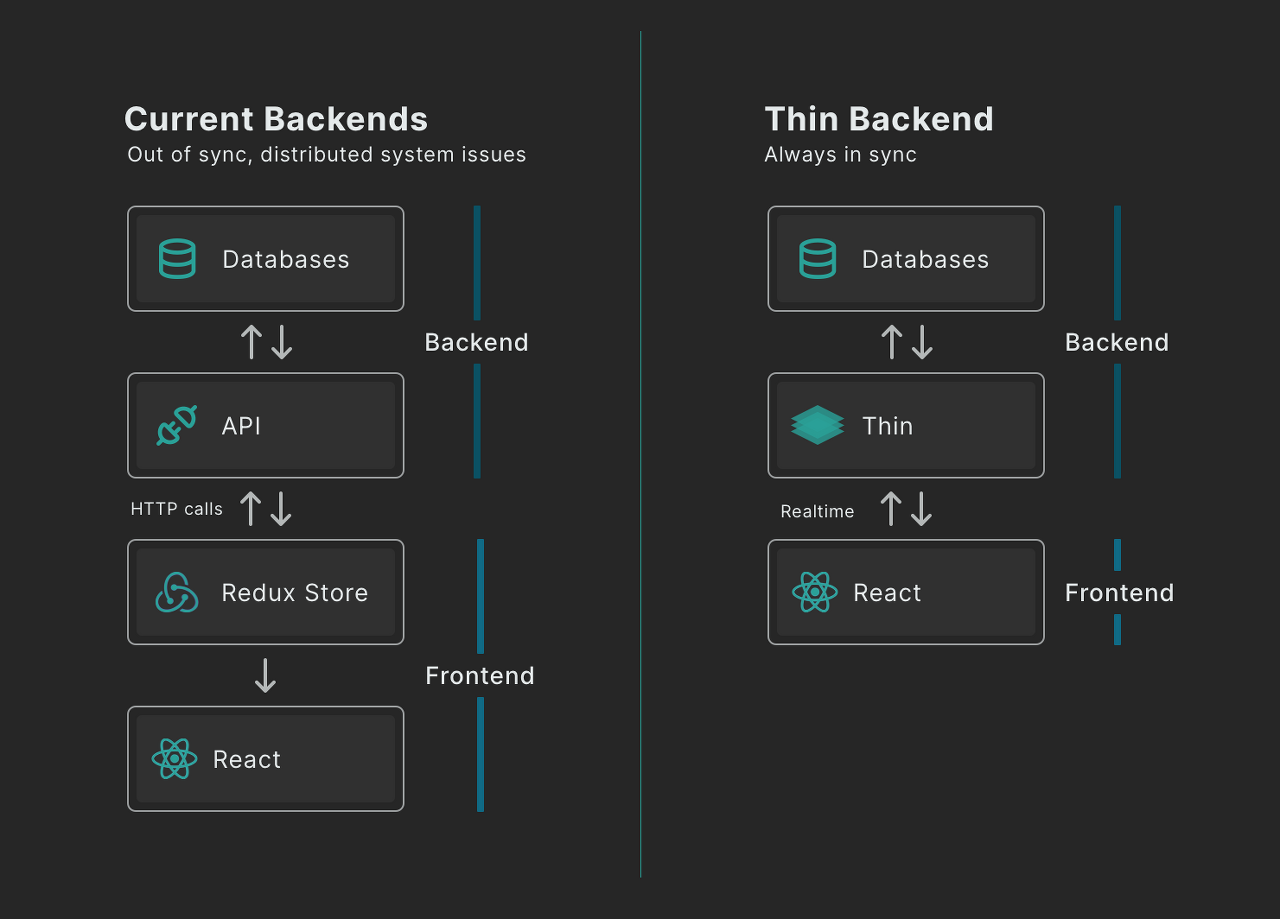
One of the biggest advantages of a thin backend is its simplicity. Because it's designed to be lightweight and highly efficient, it's much easier to build, maintain, and scale than traditional backend systems. Thin backends are also highly modular, which means that you can easily add or remove services as needed, without affecting the rest of the system. This makes it much easier to adapt to changing requirements and to scale the system as traffic increases.
Another strength of a thin backend is its performance. Because it's highly optimized for speed and efficiency, it can handle large amounts of traffic with ease, without sacrificing performance. Additionally, because it's so lightweight, it can run on smaller, less expensive servers, which can save you a lot of money in hosting costs.
Thin backends are also highly flexible, which means that you can easily integrate them with other services and systems. This makes it much easier to build complex applications that require multiple backend systems to work together.
Finally, because thin backends are built using open-source frameworks, they are highly customizable. This means that you can modify the code to better suit your specific needs, or even create your own custom services to add to the system.

Apart from the main strengths of thin backend mentioned above, there are several other advantages to using this approach. One of the biggest is that thin backends are highly scalable. Because they are designed to be modular and highly efficient, they can handle large amounts of traffic with ease, and can be easily scaled up or down as needed.
Another advantage of thin backends is that they are highly resilient. Because each service is focused on a specific task or function, the system as a whole is much more resilient to failure. If one service fails, it doesn't necessarily mean that the entire system will fail, which is a huge advantage when it comes to maintaining uptime and ensuring that your application is always available.
Thin backends are also highly secure. Because they are built using open-source frameworks, they are constantly being updated and improved to address any security vulnerabilities. This means that you can be confident that your backend system is secure and that your data is safe.
How to Use Thin Backend If you're interested in using a thin backend, the good news is that it's relatively easy to get started, even if you're a beginner. There are a number of open-source thin backend frameworks available, such as Express.js and Flask, that provide a simple and intuitive way to build backend systems. These frameworks typically provide a set of core services, such as routing and middleware, that you can use to build your own backend system.
To start building your own thin backend, you'll need to have some basic knowledge of programming languages such as JavaScript or Python. You'll also need to be familiar with concepts such as APIs and HTTP requests. Once you have these basics down, you can start building your own backend system using one of the available frameworks.
Simple usage This is a quick start that appears when you sign up for a thin backend, it's very simple.
npx degit digitallyinduced/thin-typescript-react-starter thin-project
cd thin-project && npm install && npm install --save-dev "https://thin.dev/types/6cca19dc-dc50-48ad-aad4-c5286134d9d0/cappulbkdeIHkbOOTUJoxqAakuLZBrzw"
echo 'BACKEND_URL=https://test-161.thinbackend.app' > .env
npm run dev
Now You can see your app!
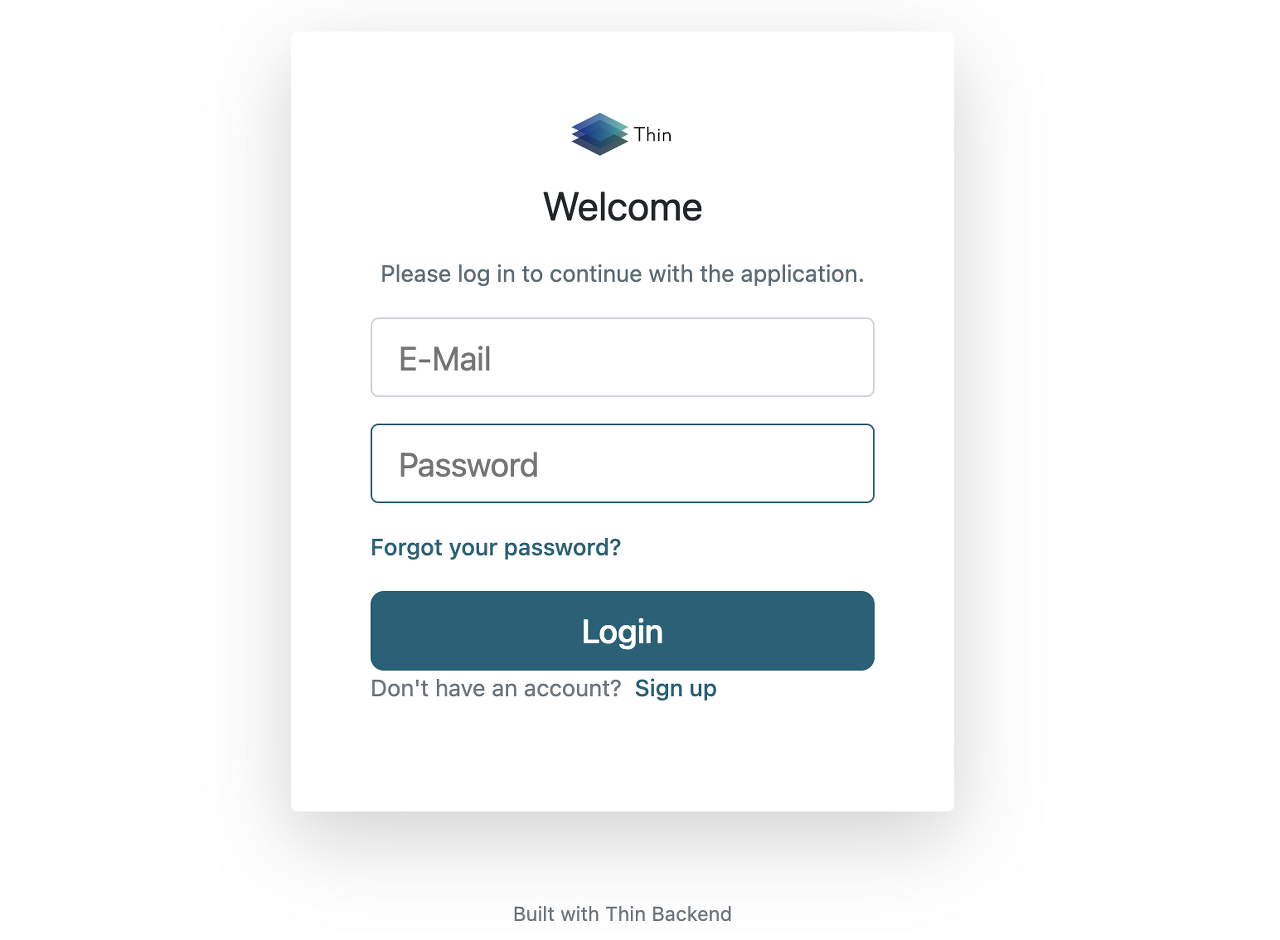
By default, you can check the database where the user table is created, and you can even register as a member by clicking the sign up button above, and you can also check the users added to the database in real time. Login, signup, and logout have already been developed.
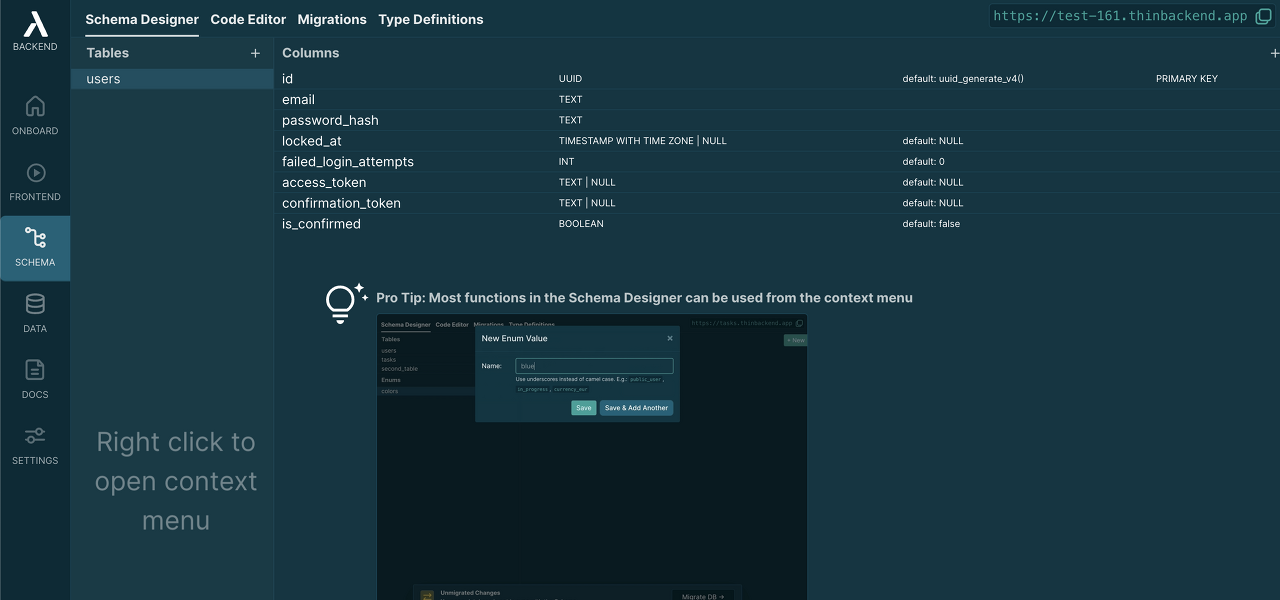
The project structure is simple. Through thin-backend-react library, put ThinBackend as the top tag and put the tags to be rendered as children. At this time, if requireLogin attribute is set to true in the ThinBackend tag, you need to login using the login format provided by ThinBackend to see the tags defined as children in order to view the tags set as children.
And through the useCurrentUser function provided by the thin-backend-react library, the current user information can be retrieved and used. Logout is also provided by the thin-backend library. In this way, the login, logout, register function, which was cumbersome when starting a project, can be implemented very simply. Now you just need to implement the contents of the actual web site right away!
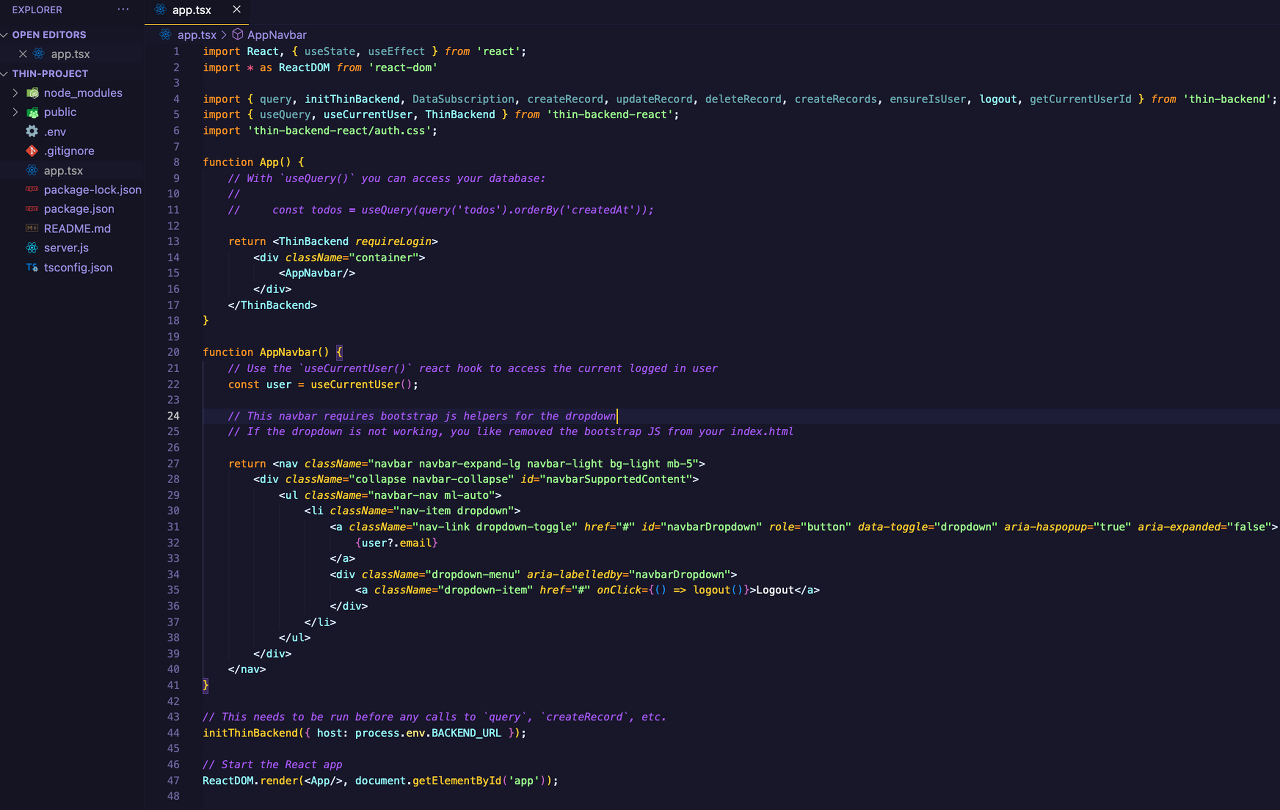
There are several common use cases for thin backend, which make it a popular choice for developers. One example is for building microservices. Microservices are small, independent services that work together to form a larger application. Because each service is focused on a specific task or function, a thin backend is the perfect architecture for building microservices.
Another common use case for thin backend is for building APIs. APIs are a way for different applications to communicate with each other. Because a thin backend is highly modular and flexible, it's a great choice for building APIs that can work with a wide variety of different applications.
Thin backend is also a popular choice for building real-time applications, such as chat applications or real-time gaming applications. Because it's highly optimized for speed and performance, it can handle the large amounts of data that are typically involved in real-time applications.
 One of the main limitations is that it may not be suitable for larger, more complex websites. Thin Backend is designed to be lightweight and efficient, which can make it an excellent choice for small to medium-sized websites. However, larger websites may require more complex functionality and may benefit from a traditional backend with a database.
One of the main limitations is that it may not be suitable for larger, more complex websites. Thin Backend is designed to be lightweight and efficient, which can make it an excellent choice for small to medium-sized websites. However, larger websites may require more complex functionality and may benefit from a traditional backend with a database.
Another limitation of Thin Backend is that it may require more development time and expertise than other similar technologies. Because Thin Backend does not use a database, creating custom modules and integrating them into a website may require more coding expertise than other similar technologies. Additionally, because Thin Backend is a relatively new technology, there may be fewer resources and support available compared to more established technologies.
Another limitation of Thin Backend is that it may not be compatible with all hosting environments. Thin Backend typically requires a web server with certain configurations to function properly, which may limit the choice of hosting providers for a website built with Thin Backend.
In conclusion, despite these limitations, Thin Backend remains an excellent choice for many web development projects, particularly those that require a lightweight, fast-loading website with a high degree of customization and security.
a thin backend is a new approach to building backend systems that is lightweight, modular, and highly efficient. It's designed to be easy to build, maintain, and scale, and can handle large amounts of traffic with ease. If you're interested in building your own thin backend, there are a number of open-source frameworks available that provide a simple and intuitive way to get started. So why not give it a try and see for yourself what the best strengths of the thin backend can do for your web application?
As more and more web applications are developed, the need for scalable backend systems that can handle large amounts of traffic becomes increasingly important. By adopting a thin backend approach, you can build a system that is efficient, easy to maintain, and highly adaptable to changing requirements. So if you're looking for a new approach to building backend systems, why not give a thin backend a try? You may be surprised at just how effective it can be.
Overall, thin backend is a great choice for developers looking for a lightweight, modular, and scalable backend system that can handle large amounts of traffic with ease. Its simplicity, flexibility, and performance make it a popular choice for many developers, and its open-source nature means that it's constantly being improved and updated to address any issues or vulnerabilities. So if you're looking to build a new backend system, consider giving a thin backend a try - you may be surprised at just how effective it can be.
 Are you tired of slow and inefficient data storage solutions? Look no further than Dragonfly, the in-memory data store that is taking the tech world by storm. With lightning-fast speed and compatibility with existing Redis and Memcached APIs, Dragonfly is the perfect solution for anyone looking to improve their data storage capabilities.
Are you tired of slow and inefficient data storage solutions? Look no further than Dragonfly, the in-memory data store that is taking the tech world by storm. With lightning-fast speed and compatibility with existing Redis and Memcached APIs, Dragonfly is the perfect solution for anyone looking to improve their data storage capabilities.
Upon entering Dragonfly's homepage, you'll be greeted with a plethora of impressive features. First and foremost, Dragonfly boasts lightning-fast speed that is unmatched by other data storage solutions. Additionally, it offers high availability and data durability, ensuring that your data is always safe and accessible.
But that's not all. Dragonfly also offers support for multiple data types, including strings, hashes, and sets. It also supports advanced features like transactions and Lua scripting, giving you even more control over your data.
One of the most powerful features of Dragonfly is its support for Lua scripting. With this functionality, you can execute complex operations on your data directly within the data store, without the need to move it to an external system.
This provides a number of significant benefits. First and foremost, it allows for greater efficiency and speed. By performing operations within the data store itself, you can reduce network overhead and minimize latency.
Additionally, Lua scripting enables greater flexibility in how you manage your data. You can easily write custom scripts that perform specific functions or automate certain tasks, all while taking advantage of Dragonfly's lightning-fast performance.
Overall, if you're looking to maximize the speed and efficiency of your data storage solution while maintaining flexibility and control over your data management processes, Dragonfly with Lua scripting is an excellent choice.
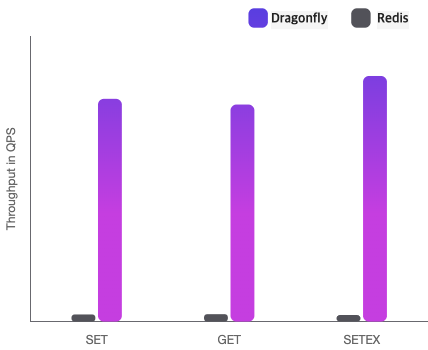 So how does Dragonfly stack up against other popular data storage solutions like Redis and Memcached? In terms of speed and performance, Dragonfly is the clear winner. Its in-memory architecture allows for lightning-fast data access and retrieval, while Redis and Memcached rely on disk-based storage that can slow things down.
So how does Dragonfly stack up against other popular data storage solutions like Redis and Memcached? In terms of speed and performance, Dragonfly is the clear winner. Its in-memory architecture allows for lightning-fast data access and retrieval, while Redis and Memcached rely on disk-based storage that can slow things down.
However, Dragonfly does have a few drawbacks. It can be more complex to set up and configure than Redis and Memcached, and it may not be the best choice for smaller-scale projects.
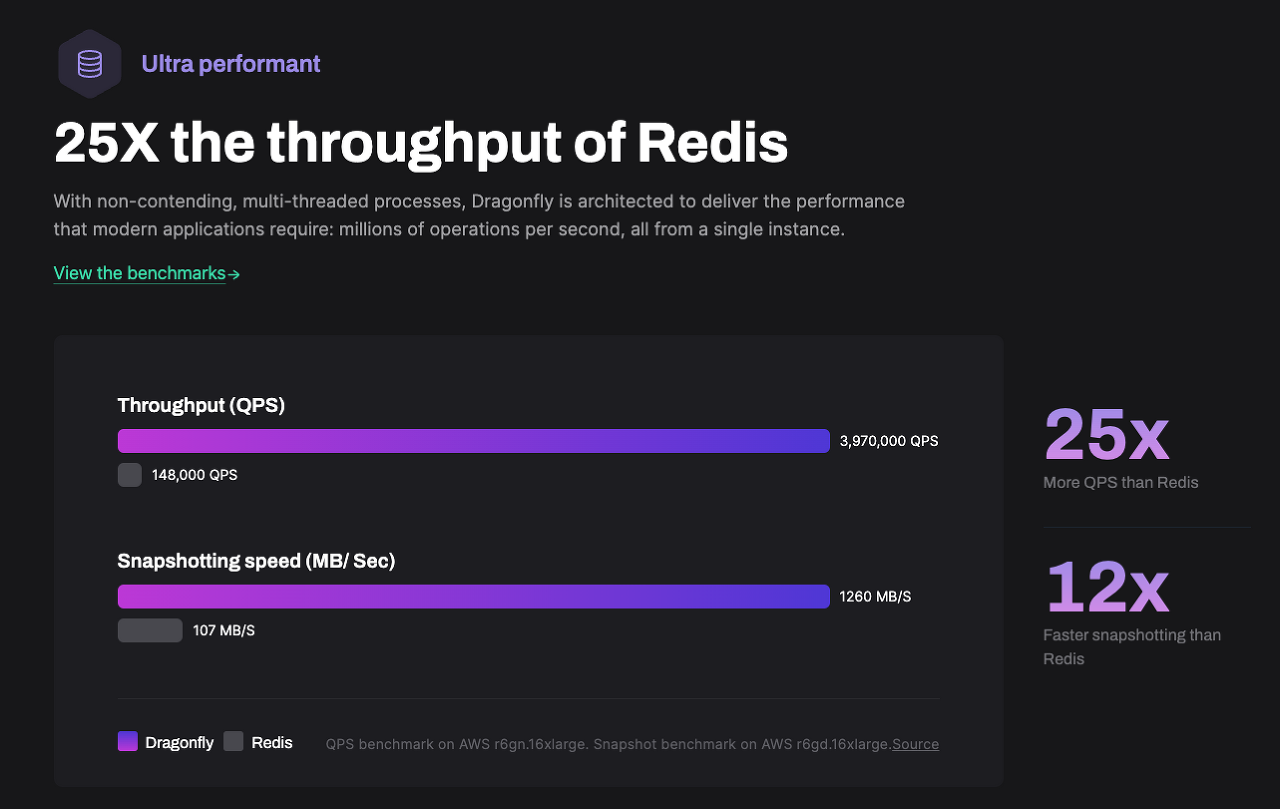 While Dragonfly's speed and performance are impressive, it can be more complex to set up and configure than Redis and Memcached. However, with a little bit of effort, you can ensure that your Dragonfly instance is optimized for maximum efficiency.
While Dragonfly's speed and performance are impressive, it can be more complex to set up and configure than Redis and Memcached. However, with a little bit of effort, you can ensure that your Dragonfly instance is optimized for maximum efficiency.
The first step in setting up Dragonfly is to choose the right hardware. Since Dragonfly relies on in-memory storage, you'll need a machine with plenty of RAM. The more RAM you have available, the larger your data sets can be and the faster your queries will run.
Once you have your hardware in place, it's time to install and configure Dragonfly itself. Fortunately, there are many resources available online that can guide you through this process step by step.
One important consideration when configuring Dragonfly is how much memory to allocate to each data type. By default, Dragonfly allocates equal amounts of memory to all data types. However, depending on your use case, it may make sense to allocate more or less memory to certain types of data.
Another consideration is how to handle persistence. While Dragonfly is an in-memory data store and doesn't rely on disk-based storage like Redis or Memcached do, it does offer options for persisting data in case of a failure or restart.
Overall, setting up and configuring Dragonfly may require some extra effort compared to other data storage solutions. However, the benefits in terms of speed and performance make it well worth the investment. With a little bit of optimization and configuration, you can take full advantage of everything that this powerful tool has to offer.
Despite its advanced features, Dragonfly is surprisingly easy to use. Its compatibility with Redis and Memcached APIs means that you can start using it right away with minimal setup required. Plus, Dragonfly offers a variety of usage plans to fit your needs and budget, making it accessible to businesses of all sizes.
While Dragonfly is a powerful and efficient data storage solution, using it in a production environment requires careful planning and execution. Here are some best practices to keep in mind when implementing Dragonfly in a production environment:
By understanding your data access patterns, you can optimize your use of Dragonfly and ensure that it meets your performance requirements.
By monitoring these metrics, you can identify any bottlenecks or performance issues and take action before they impact your application's performance.
Implement High Availability High availability is critical for any production environment, and Dragonfly is no exception. By implementing high availability mechanisms like clustering and replication, you can ensure that your data remains accessible even in the event of hardware failures or other issues.
Use Encryption and Authentication To protect sensitive data stored within Dragonfly, it's important to use encryption and authentication mechanisms. This includes encrypting data at rest as well as during transmission between clients and the Dragonfly instance.
Additionally, using authentication mechanisms like passwords or access keys can help prevent unauthorized access to your data.
By regularly backing up your data to an external system or offsite location, you can minimize the risk of losing important information due to hardware failures or other issues.
By following these best practices when using Dragonfly in a production environment, you can ensure that it meets your performance requirements while maintaining the security and integrity of your data.
If you're looking for a fast, reliable, and feature-packed data storage solution, look no further than Dragonfly. With its lightning-fast speed, advanced features, and compatibility with Redis and Memcached APIs, it's the perfect choice for businesses of all sizes. So why wait? Try Dragonfly today and experience the power of in-memory data storage for yourself.
go to https://dragonflydb.io/
 Chatting with AI chatbots has never been more engaging and natural than with GPT-4. GPT-4, or Generative Pre-trained Transformer 4, is the latest AI model developed by OpenAI, a leading research organization in the field of artificial intelligence.
Chatting with AI chatbots has never been more engaging and natural than with GPT-4. GPT-4, or Generative Pre-trained Transformer 4, is the latest AI model developed by OpenAI, a leading research organization in the field of artificial intelligence.
GPT-4 is an AI model that uses deep learning algorithms to generate human-like text. It is a language model that has been trained on a massive amount of data from the internet, including books, articles, and websites. The model is pre-trained on a diverse set of tasks, such as language translation, question-answering, and text summarization.
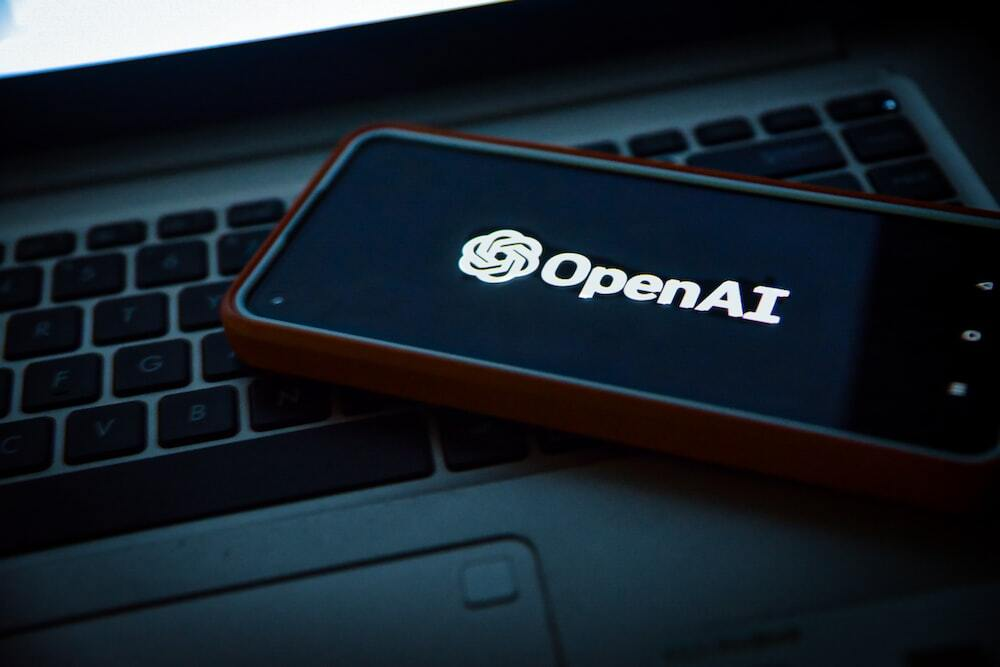 GPT-4 is the result of years of research and development by OpenAI. The model is based on the Transformer architecture, which was first introduced in the paper "Attention Is All You Need" by Google researchers in 2017. The Transformer architecture is a neural network that uses self-attention mechanisms to process input data.
GPT-4 is the result of years of research and development by OpenAI. The model is based on the Transformer architecture, which was first introduced in the paper "Attention Is All You Need" by Google researchers in 2017. The Transformer architecture is a neural network that uses self-attention mechanisms to process input data.
To train GPT-4, OpenAI used a massive amount of data from the internet, including books, articles, and websites. The model was trained using unsupervised learning, which means that it learned from the data without any human intervention. The training process took several months and required a massive amount of computational resources.
GPT-4 is the latest in a series of language models developed by OpenAI, following the success of GPT-3 and other models such as BERT. While these models share some similarities, there are also significant differences between them.
Compared to its predecessor, GPT-3, which was released in 2020 and quickly became known for its impressive language generation capabilities, GPT-4 promises even more advanced natural language processing abilities. With a larger training dataset and improved architecture, it is expected to generate more coherent and contextually appropriate responses than any AI chatbot before it.
BERT (Bidirectional Encoder Representations from Transformers), on the other hand, is a model developed by Google that excels at natural language understanding tasks like question answering and text classification. While it may not have the same level of language generation capabilities as GPT-4 or GPT-3, BERT's ability to understand complex contextual relationships makes it an important tool for many AI applications.
Overall, while each model has unique strengths and weaknesses, GPT-4 represents a major leap forward in AI chatbot technology with the potential to significantly improve our interactions with machines.
GPT-4 is known for its ability to generate human-like text that is engaging and natural. The model can understand the context of the conversation and generate responses that are relevant and coherent. It can also generate text in multiple languages and styles, including formal and informal language.
GPT-4 is also capable of learning from new data and adapting to new tasks. This means that it can be fine-tuned for specific applications, such as customer service or personal assistants.
GPT-4 has the potential to revolutionize the way we interact with chatbots and virtual assistants. The model can be used in a wide range of applications, such as customer service, healthcare, and education.
In customer service, GPT-4 can provide personalized and engaging responses to customers, improving customer satisfaction and loyalty. In healthcare, the model can be used to generate patient reports and assist doctors in diagnosing diseases. In education, GPT-4 can be used to generate personalized learning materials and provide feedback to students.
 As with any technological advancement, there are concerns about the impact that GPT-4 will have on the job market. In particular, some experts predict that the model may replace human workers in certain roles, such as customer service representatives.
As with any technological advancement, there are concerns about the impact that GPT-4 will have on the job market. In particular, some experts predict that the model may replace human workers in certain roles, such as customer service representatives.
GPT-4's ability to generate personalized and engaging responses could make it an attractive alternative to human customer service representatives. Companies may choose to implement the model as a cost-saving measure, reducing their reliance on human workers.
However, it is important to note that GPT-4 is not designed to replace human workers entirely. The model is still limited by its programming and training data and may not be able to handle complex or emotional situations as well as a human representative.
Furthermore, GPT-4's potential for improving customer satisfaction and loyalty means that it could create new job opportunities in other areas. For example, companies may need more skilled workers to manage and fine-tune the model for specific applications.
Overall, while there may be some disruption in the job market due to GPT-4's capabilities, it is unlikely that it will completely replace human workers in customer service and other similar roles. Instead, we can expect a shift towards more specialized and skilled roles in managing AI models like GPT-4.
While the use cases for GPT-4 in customer service, healthcare and education are well established, the potential applications of this technology extend far beyond these areas. In fact, there are already a number of exciting use cases being explored in industries such as finance and marketing.
One area where GPT-4 could have a significant impact is finance. The model's ability to analyze large amounts of data and generate insights could be invaluable for financial institutions looking to improve their decision-making processes. For example, GPT-4 could be used to analyze market trends and predict future stock prices with greater accuracy than traditional methods.
In marketing, GPT-4 could be used to create more personalized and engaging content for consumers. The model's ability to generate natural language text that is tailored to individual preferences and interests could help companies stand out in a crowded marketplace. Additionally, GPT-4 could be used to analyze consumer data and provide insights into buying behavior, allowing companies to optimize their marketing strategies.
Overall, the potential applications of GPT-4 extend far beyond the industries mentioned in this document. As more organizations begin to explore the capabilities of this technology, we can expect to see new and innovative use cases emerge across a wide range of industries.
GPT-4 has generated a lot of excitement and interest in the AI community. Many experts believe that the model represents a significant breakthrough in natural language processing and AI.
However, there are also concerns about the potential misuse of the technology, such as the generation of fake news or the manipulation of public opinion.
Despite these concerns, GPT-4 has already been used in several applications, such as chatbots and virtual assistants. The model has been praised for its ability to generate engaging and natural conversations, and it is expected to become even more prevalent in the future.
In conclusion, GPT-4 represents a significant breakthrough in the field of AI chatbots. The model's ability to generate human-like text and adapt to new tasks has the potential to revolutionize the way we interact with chatbots and virtual assistants. While there are concerns about the potential misuse of the technology, the prospects for future use are promising.
 While GPT-4 represents a significant leap forward in AI chatbot technology, research is already underway to develop even more advanced language models. One area of focus for researchers is improving the ability of language models to understand and generate contextually appropriate responses.
While GPT-4 represents a significant leap forward in AI chatbot technology, research is already underway to develop even more advanced language models. One area of focus for researchers is improving the ability of language models to understand and generate contextually appropriate responses.
One approach that shows promise is the use of multimodal inputs, such as images and videos, to provide additional context for language models. By incorporating visual information into their understanding of language, these models could generate even more engaging and natural conversations.
Another area of focus is improving the ethical considerations surrounding the development and use of language models. As these models become more advanced and prevalent, it will be important to ensure that they are being used in ways that benefit society as a whole.
Finally, researchers are also exploring the potential for developing more specialized language models for specific industries or applications. For example, a language model designed specifically for medical applications could help doctors diagnose diseases or generate patient reports with greater accuracy than a general-purpose model like GPT-4.
Overall, while GPT-4 represents a major breakthrough in AI chatbot technology, there is still much room for further development and innovation in this field. As researchers continue to explore new approaches and techniques, we can expect to see even more advanced and sophisticated language models emerge in the years ahead.
All of the above articles were also written using the gpt language model. In this way, the era has arrived in whichcomputers create everything that has been created by humans, such as music, texts, videos, pictures, and coding. It seems that the era of making works with sincerity has almost passed. That role will now be replaced by computers, and how to use it in detail seems to be the focus.